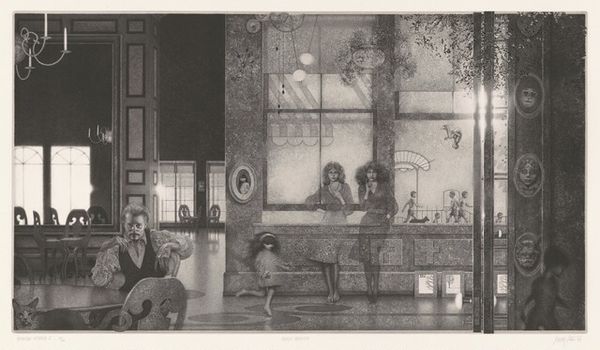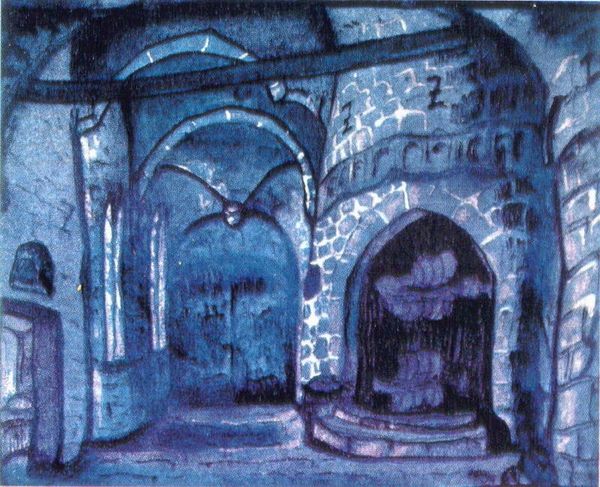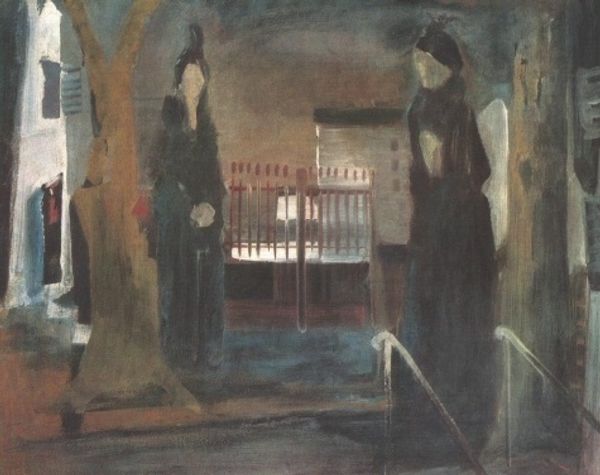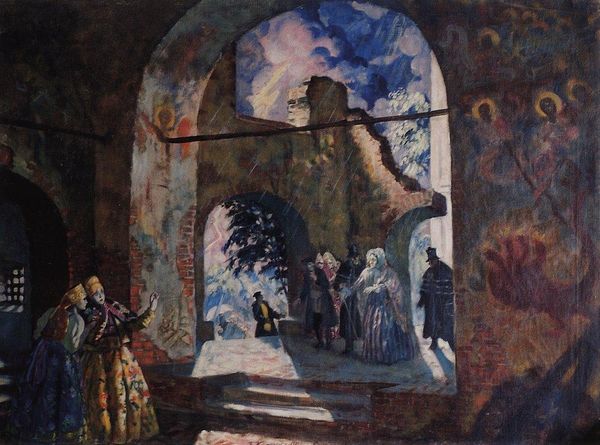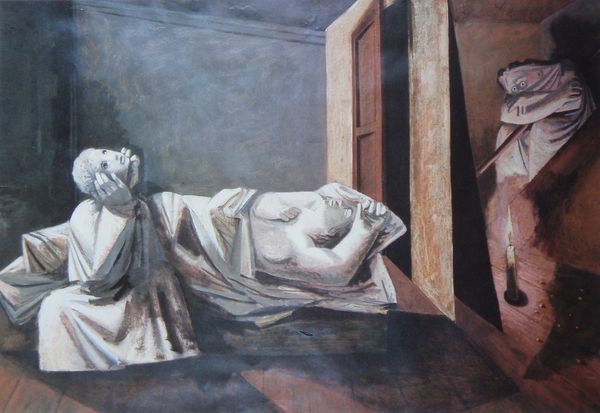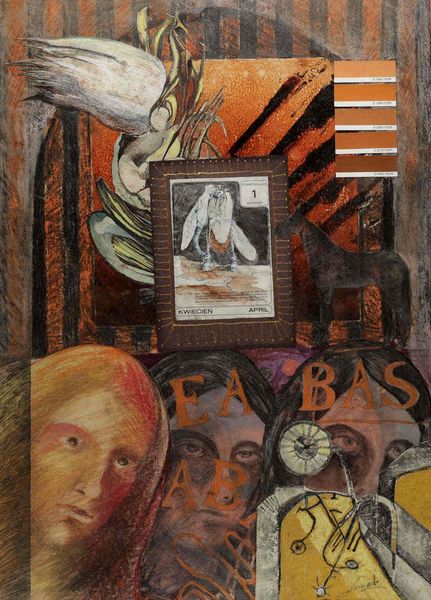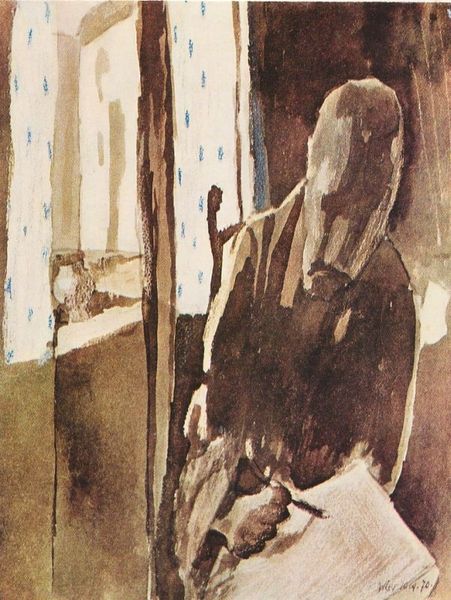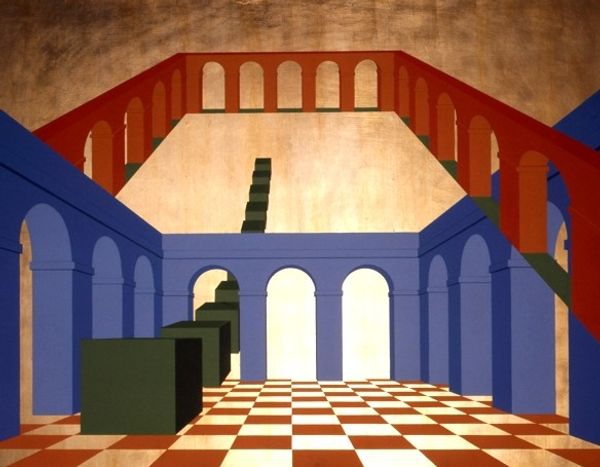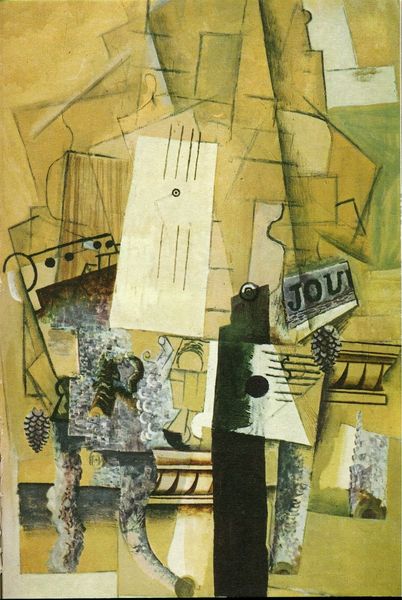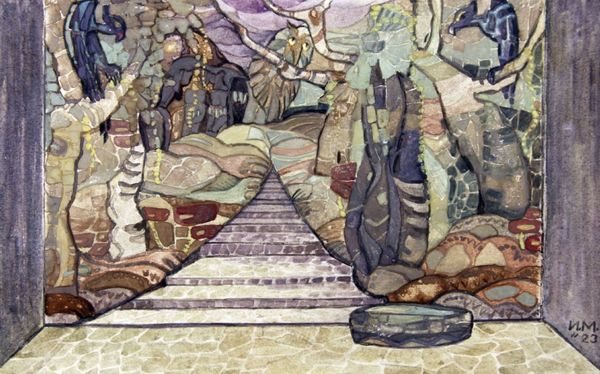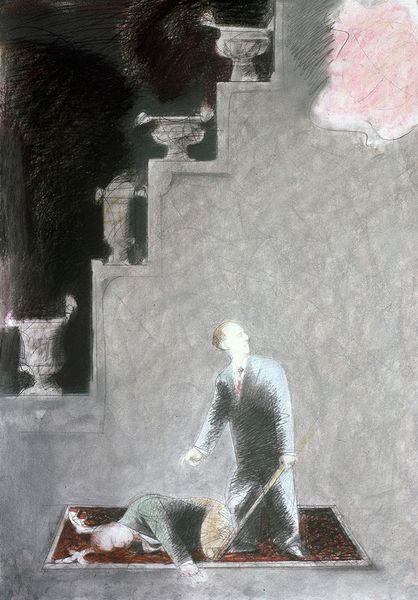
painting, watercolor
#
portrait
#
painting
#
arts-&-crafts-movement
#
impressionist landscape
#
figuration
#
watercolor
#
genre-painting
#
watercolor
Copyright: Public domain
Editor: We're looking at "In Sundborn Church," a watercolor by Carl Larsson, created in 1905. I’m struck by the sort of divided composition—there’s the brighter, almost ethereal section with the girl and the pillars, then the darker, more enclosed part with the people in the gallery. What draws your attention, as you look at this work? Curator: I observe a compelling juxtaposition of light and shadow that structures the pictorial space. Note how Larsson uses the architectural elements – the pillars, the screened gallery – not merely as representation, but as devices for orchestrating the visual rhythm. The cool blues and whites contrasted against the warmer tones near the entrance create depth, no? Editor: Absolutely. The use of colour to create depth is fascinating. What would you say about Larsson's artistic choices here, concerning the scale of figures in relation to architecture? Curator: The scale relationships are deliberately skewed. The foreground figure is brought forward and occupies more visual space than her position warrants, creating a tension. Are we invited into the work's space, or distanced from it by the figure's unexpected imposing presence? I’d say it draws attention to the constructed nature of the scene. Editor: It's interesting how you read the distortion of scale as a device to break away from a naturalistic rendering. That helps me reconsider the way Larsson uses perspective, too. Curator: Precisely. Perspective here seems almost wilfully naive. Is the artist striving to evoke the past and traditional compositions? This is only speculation that a formal reading allows us to consider. Editor: This has really highlighted how much close formal analysis can reveal about artistic intention! Thanks for your insights. Curator: Indeed. Analyzing line, color, and form allows us access to understanding, wouldn't you agree?
Comments
No comments
Be the first to comment and join the conversation on the ultimate creative platform.
